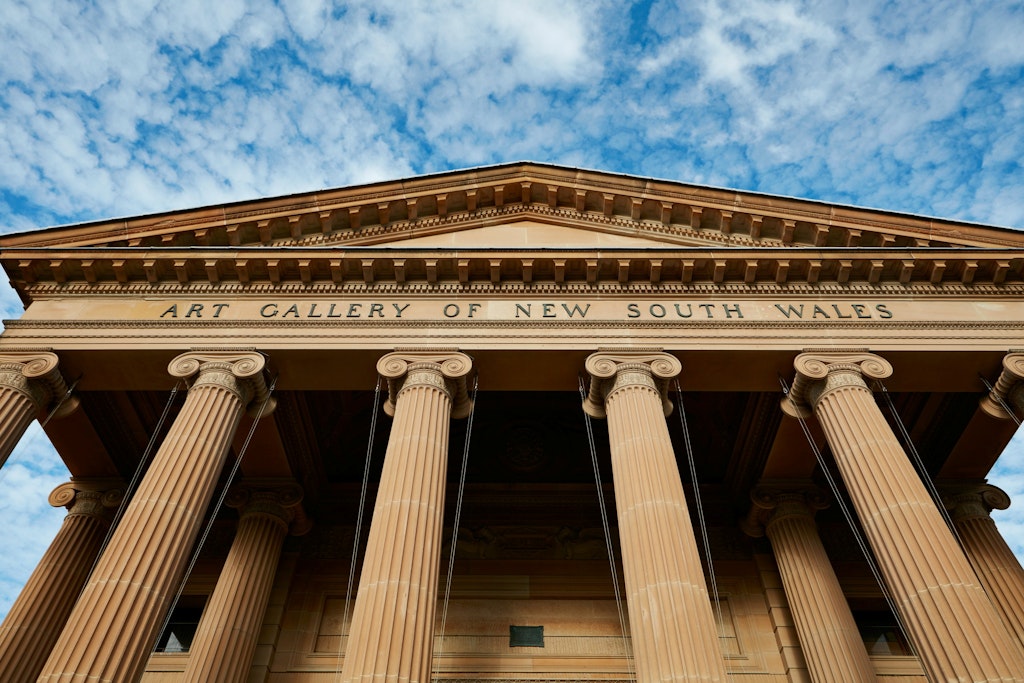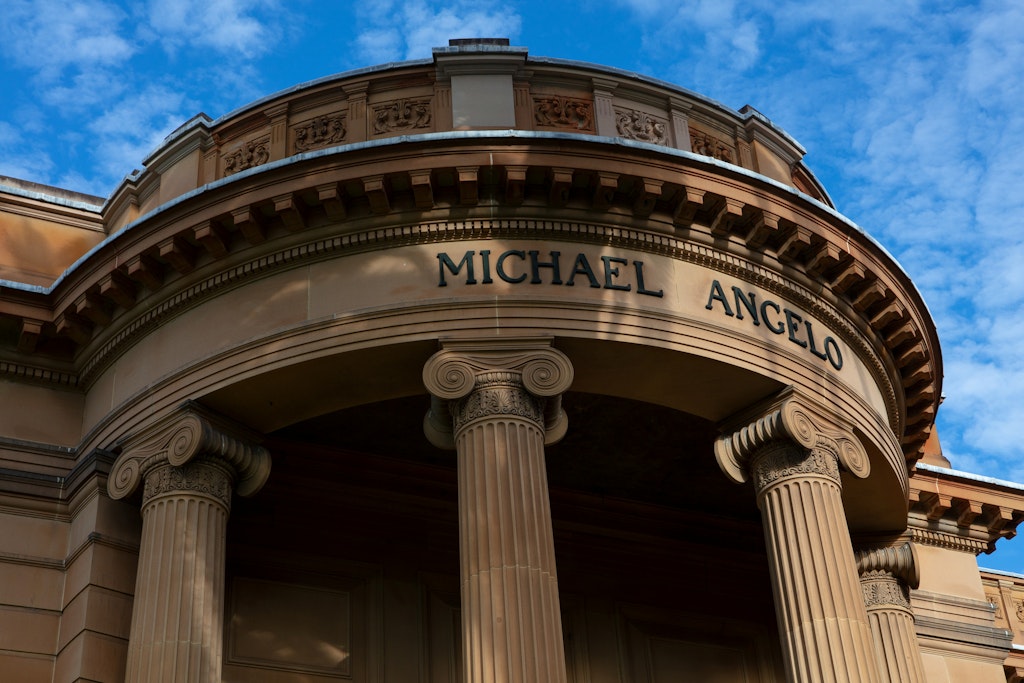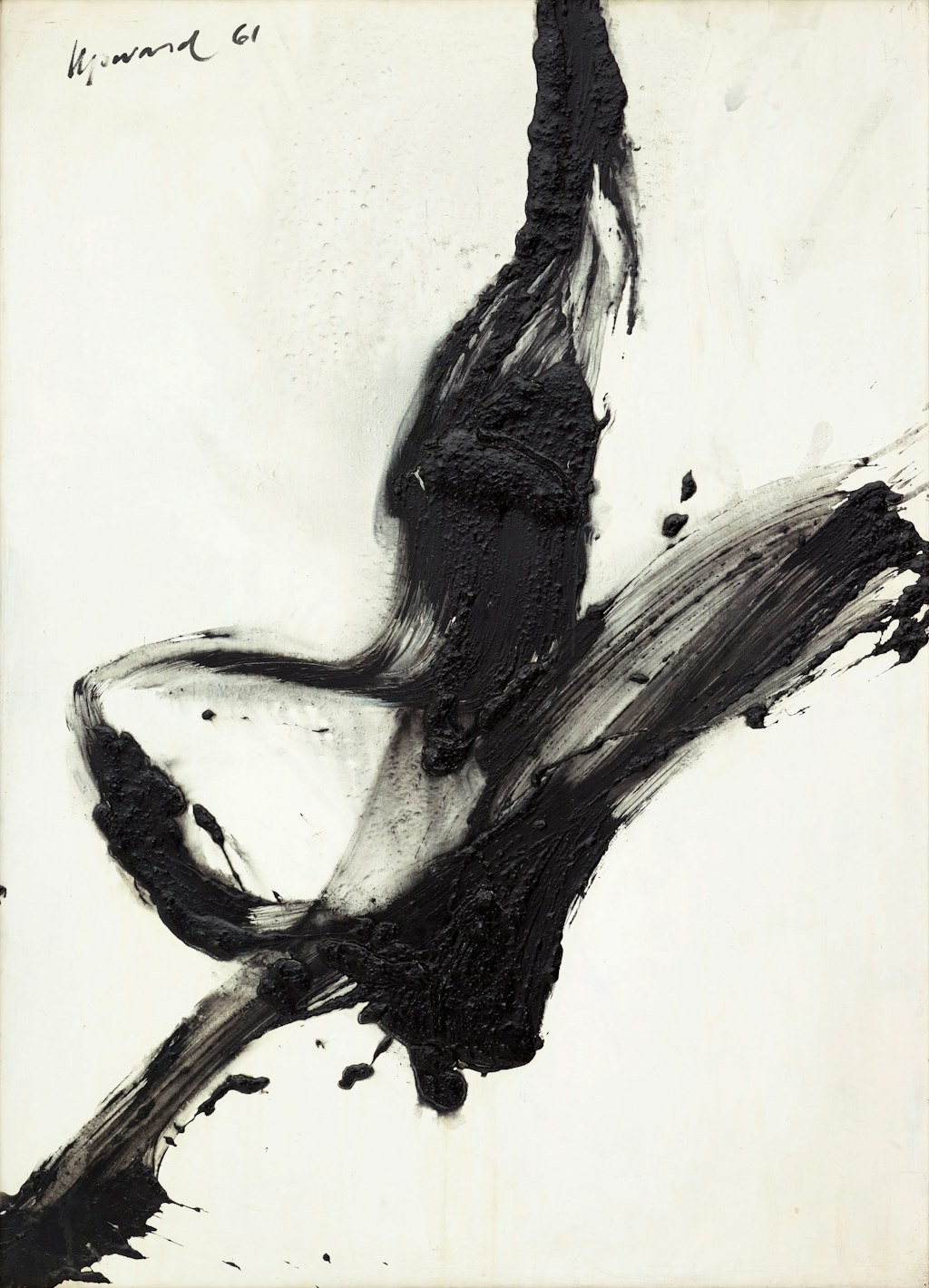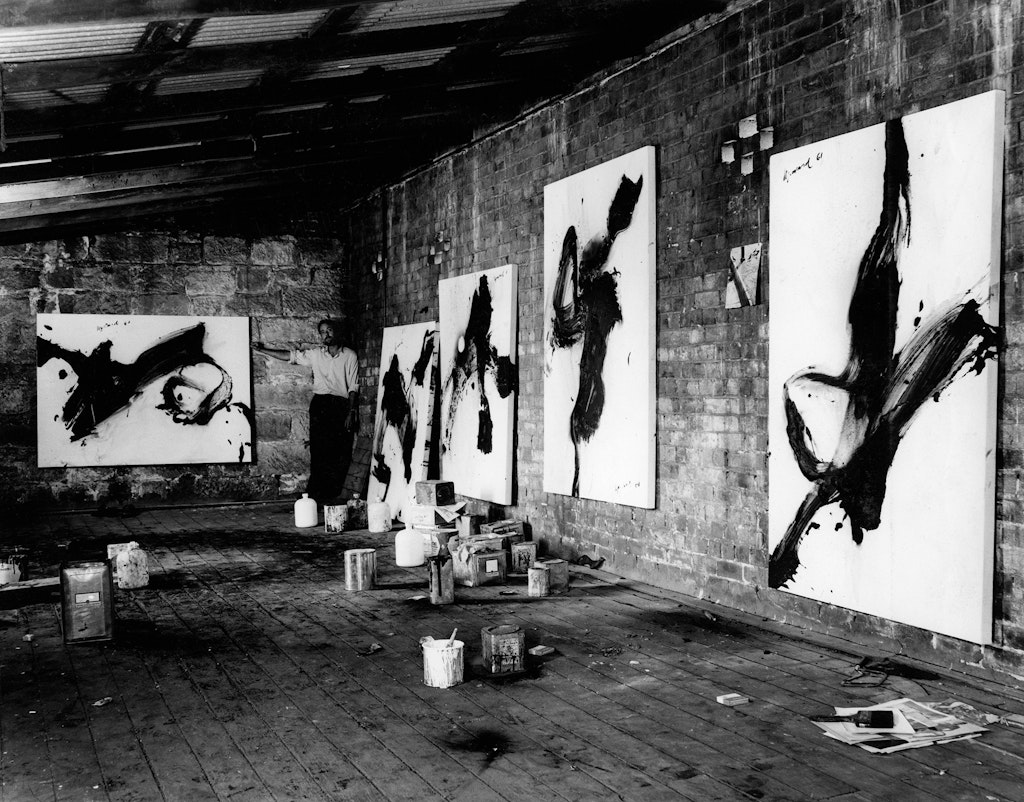Recollections of a co-curator
Rozee Cutrone is one of 11 residents from Wolloomooloo, our neighbouring suburb in inner-city Sydney, who answered a call-out from the Art Gallery of New South Wales for co-curators for an exhibition.

The imposing original entry to the Art Gallery of New South Wales
From the gully of Woolloomooloo, the Art Gallery of New South Wales sat for over 100 years as Sydney’s grand temple of art, high on a hill where the art gods might reside.
I often wonder if ‘Michael Angelo’ was carved into one of the building’s prominent sandstone niches as a joke back then, though perhaps not. It’s something that amuses me, and I like the way it softens the otherwise austere architecture. (It’s a reference to Michelangelo di Lodovico Buonarroti Simoni, who came to be known as simply Michelangelo – a bit like Madonna.)
When the official collectors and keepers of art reached down from Mount Olympus and extended an invitation to participate in a collaborative project, it was an exciting moment for me as a local and as an artist.

The front of the Art Gallery where the name Michael Angelo appears alongside other names
The front of the Art Gallery where the name Michael Angelo appears alongside other names
As co-curators of what became the Local Rhythms and Actions exhibition, our days began meeting on the steps of the Art Gallery under the massive columns, rain or shine. Then it was on to morning tea and great coffee in the Gallery’s cafe. Winter was cold and wet this year, and less-mobile community co-curators were picked up and dropped back home without a hitch.
The Art Gallery staff graciously shared their knowledge and expertise to encourage our participation and ensure that everyone had a voice. We spent hours in lively discussion, exchanging ideas and viewing possible works for the exhibit.
We took backroom tours to explore the behind-the-scenes machinations of the Gallery and were invited to view the Gallery’s archive collections. We toured the fascinating conservation rooms, where talented conservators explained and demonstrated the processes that occur before an exhibition. We were ferried to a largely secret off-site storage facility containing priceless art. Many of the artworks stored there have not been on public display for decades. Some of those are now on show among the more than 70 works in Local Rhythms and Actions.

Peter Upward New reality 1961, Art Gallery of New South Wales, Visual Arts Board Australia Council Contemporary Art Purchase Grant 1975 © Estate of Peter Upward
Peter Upward New reality 1961, Art Gallery of New South Wales, Visual Arts Board Australia Council Contemporary Art Purchase Grant 1975 © Estate of Peter Upward
From the community end, the project was facilitated by two Woolloomooloo creatives who are also my neighbours. Maya Sheridan and Rosano Martinez are a local power couple who created the extraordinary and much-loved annual Woolloomoolivin’ cultural festival, which links our once-isolated community to the rest of the local inner-city community.
Woolloomooloo’s social housing and its historic architecture have long been under pressure, under the vague but possible threat of extinction, as reflected by the 1970s BLF Green Ban and activist Juanita Nielson’s battle against corrupt property developers of the time – jointly successful, but personally fatal for Nielson. This historic fight, which continued into the 1980s and 90s, is represented in photographs now exhibited in Local Rhythms and Actions.
The bohemian spirit of Woolloomooloo is often forgotten but it resurfaced like magic during our artwork selection process when Peter Upward’s 1961 painting New reality was retrieved from storage.

Peter Upward at his Brougham Street studio, Woolloomooloo, 1961, National Art Archive, Art Gallery of New South Wales, image courtesy Julie Harris
Peter kept a studio on Brougham Street in Woolloomooloo in the 60s, something I wasn’t aware of. He was one of my favourite tutors at the National Art School. Looking at his painting reminded me of the genuine encouragement he offered me back in the 80s when the trend in painting was thick paint troweled on wherever possible. I was off-trend with my layered wash techniques, but he encouraged me to be authentic in my practice rather than follow fashion to be part of a scene. I believe his influence is obvious in my work, and in my interest in Asian calligraphy and Zen philosophy in art. The unexpected encounter with Peter’s work in the Gallery’s collection was timely because I had a show looming and I was experiencing artist’s block. The project reconnected me to an essential part of my process as a painter and artist.
As the Art Gallery’s new building emerges, the transformation in the institution is clear. It’s a cosmopolitan, community-engaged and accessible arts hub – a welcome evolution into an international and culturally connected gallery, which echoes the original conceptual vision of its founders in 1871 when there was no building and no art.